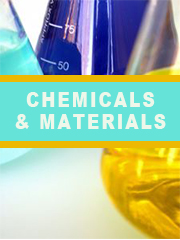TOP CATEGORY: Chemicals & Materials | Life Sciences | Banking & Finance | ICT Media

Download Report PDF Instantly
Report overview
The global Agriculture Grade Ammonium Bicarbonate market was valued at US$ 1090.7 million in 2022 and is projected to reach US$ 1105.4 million by 2029, at a CAGR of 0.2% during the forecast period. The influence of COVID-19 and the Russia-Ukraine War were considered while estimating market sizes.
Ammonium bicarbonate is an inorganic compound with formula (NH4) HCO3, simplified to NH5CO3. It is the bicarbonate salt of ammonium. It is a colourless solid that degrades readily to carbon dioxide and ammonia.
This report aims to provide a comprehensive presentation of the global market for Agriculture Grade Ammonium Bicarbonate, with both quantitative and qualitative analysis, to help readers develop business/growth strategies, assess the market competitive situation, analyze their position in the current marketplace, and make informed business decisions regarding Agriculture Grade Ammonium Bicarbonate. This report contains market size and forecasts of Agriculture Grade Ammonium Bicarbonate in global, including the following market information:
Global Agriculture Grade Ammonium Bicarbonate Market Revenue, 2018-2023, 2024-2032, ($ millions)
Global Agriculture Grade Ammonium Bicarbonate Market Sales, 2018-2023, 2024-2032, (Kiloton)
Global top five Agriculture Grade Ammonium Bicarbonate companies in 2022 (%)
Global Ammonium Bicarbonate key players include Shandong ShunTian Chemical, Anhui Jinhe, Haoyuan Chemical, Anhui Huaertai Chemical, etc. Global top four manufacturers hold a share over 5%.
China is the largest market, with a share over 90%, followed by Europe, and India, both have a share about 5 percent.
In terms of product, Agriculture Grade is the largest segment, with a share over 80%. And in terms of application, the largest application is Agriculture, followed by Food industrial, Rubber and Leather Industrial, etc.
We surveyed the Agriculture Grade Ammonium Bicarbonate manufacturers, suppliers, distributors and industry experts on this industry, involving the sales, revenue, demand, price change, product type, recent development and plan, industry trends, drivers, challenges, obstacles, and potential risks.
Total Market by Segment:
Chapter 1: Introduces the definition of Agriculture Grade Ammonium Bicarbonate, market overview.
Chapter 2: Global Agriculture Grade Ammonium Bicarbonate market size in revenue and volume.
Chapter 3: Detailed analysis of Agriculture Grade Ammonium Bicarbonate manufacturers competitive landscape, price, sales and revenue market share, latest development plan, merger, and acquisition information, etc.
Chapter 4: Provides the analysis of various market segments by type, covering the market size and development potential of each market segment, to help readers find the blue ocean market in different market segments.
Chapter 5: Provides the analysis of various market segments by application, covering the market size and development potential of each market segment, to help readers find the blue ocean market in different downstream markets.
Chapter 6: Sales of Agriculture Grade Ammonium Bicarbonate in regional level and country level. It provides a quantitative analysis of the market size and development potential of each region and its main countries and introduces the market development, future development prospects, market space of each country in the world.
Chapter 7: Provides profiles of key players, introducing the basic situation of the main companies in the market in detail, including product sales, revenue, price, gross margin, product introduction, recent development, etc.
Chapter 8: Global Agriculture Grade Ammonium Bicarbonate capacity by region & country.
Chapter 9: Introduces the market dynamics, latest developments of the market, the driving factors and restrictive factors of the market, the challenges and risks faced by manufacturers in the industry, and the analysis of relevant policies in the industry.
Chapter 10: Analysis of industrial chain, including the upstream and downstream of the industry.
Chapter 11: The main points and conclusions of the report.